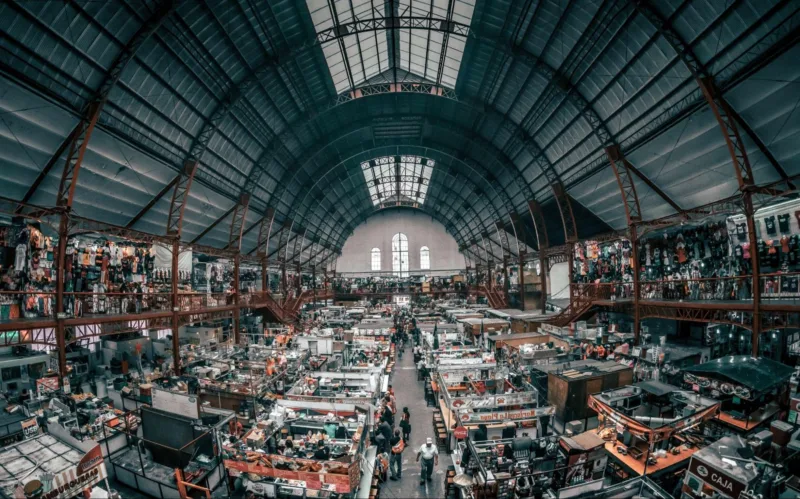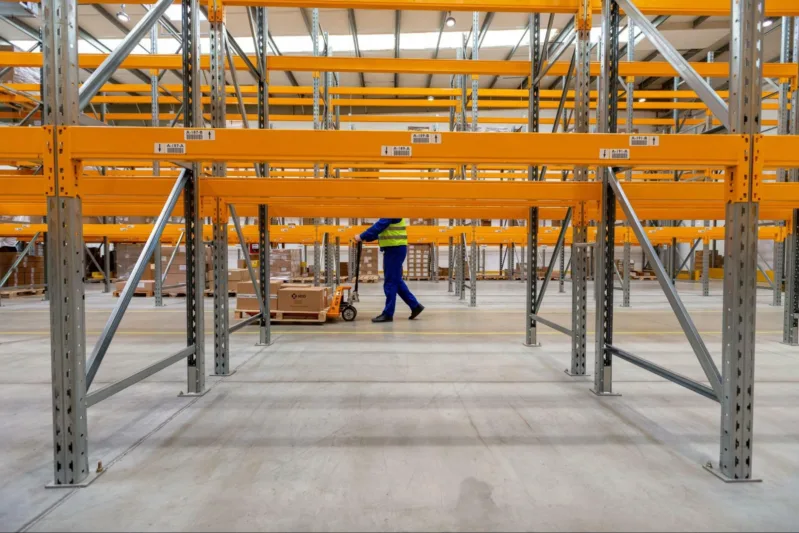Ventilation is a key component for any metal building and is necessary for a building’s longevity and performance. Metal buildings require ventilation to ensure proper humidity control, temperature management, and improved indoor air quality. Poor ventilation has negative effects in all of these areas and can reduce the expected life of the building. Before learning the best way to ventilate a metal building, it is important to understand why ventilation is so critical.

The Effect of Ventilation on Metal Buildings
Adequate ventilation is crucial for metal buildings due to ventilation’s impact on condensation, temperature regulation, and air quality.
Condensation and Ventilation
When surfaces cool down below the temperature of the air’s dew-point, liquid water forms condensation on the surface. When a metal building is not properly ventilated, air has a greater opportunity to cool down to its dew-point and form condensation. The effect can be especially pronounced on metal buildings where the outside is typically cooler than the inside of the building as the cold metal walls provide an ideal spot for condensation to form.
For metal buildings, condensation can lead to corrosion, reduced insulation performance, mold growth, and insect infestations. Over time, continuous pools of condensation can cause a great deal of damage to otherwise strong metal buildings. Ventilation helps to increase the performance and service life of metal buildings.
Temperature Regulation
Ventilation is key for keeping metal buildings comfortable year round. With ventilation, a flow of air through the building helps prevent static pockets of air from forming and helps to keep all of the air in the building mixed. Regulated temperatures also help to limit the expansion and contraction of metal wall and roof panels. Excessive expansion and contraction cycles can wear those components out over time.
Ventilation also helps to naturally keep metal buildings cooler in the summer due to the physics principles of air. As air inside the building heats up, the air naturally rises where it is exhausted from the building either through ridge vents or exhaust fans. As the warm air leaves, cool air is drawn in through louvers or other openings. In this way, the air in the metal building naturally stays cooler than in poorly ventilated metal buildings.
Indoor Air Quality
Arguably the most important outcome of good ventilation is improved indoor air quality.
Indoor air quality refers to the level of contaminants present in the air that people breathe. These types of contaminants can be volatile organic compounds (VOCs), particulate matter, or other compounds like NO2. They can have bad effects on human health and exposure limits are regulated by the EPA and OSHA.
These types of compounds and contaminants are constantly present in the air, but become more dangerous when their concentrations are higher. In an indoor space like a metal building, certain processes may be releasing contaminants. With poor ventilation, the contaminants have nowhere to go and their concentration levels continue to increase. With proper ventilation, fresh air is drawn into the metal building continuously which helps to dilute and sweep away the contaminants.
Ventilation Methods for Metal Buildings

Metal buildings typically use one of two methods to drive ventilation and generate the humidity control, temperature regulation, and improved air quality benefits that ventilation is known for. The two main types of ventilation are:
Cross-ventilation
Thermal buoyancy
Cross-ventilation is also called the wind effect because it relies on wind force to push outdoor air into the building through an opening in the building’s envelope. As the air is forced in, warm air is pushed out of openings in either the roof or other openings.
Thermal buoyancy does not rely on wind and instead allows colder, more dense air to build up in the metal building. As the cool, dense air builds up it pushes the warmer, less dense air out through roof vents. As the warm air leaves through the roof vents, a vacuum is formed which pulls in more outdoor air.
The Best Components for Ventilation
Choosing the right components to ventilate a metal building is key to ensuring proper operation. Some of the most common passive components include:
Louvers
Windows
Framed openings
Ridge vents
Turbine vents
Dampers
These components all provide openings for air to enter or leave a metal building when using either cross-ventilation or thermal buoyancy effects. To achieve even greater ventilation results, active ventilation can be added to a metal building. Active ventilation uses energy-consuming devices to promote the flow of air with a much more powerful method than either cross-ventilation or thermal buoyancy can do on their own.
Active ventilation makes use of supply fans, exhaust fans, or both to push and pull air through a metal building. When coupled with adjustable dampers, the amount of ventilation through the building can be balanced and tightly controlled.
Find the Best Dampers and Louvers on the Market with AWV
AWV has an incredible line of dampers and louvers to handle any metal building’s ventilation needs. To learn more about AWV’s ventilation products, reach out to the team today!


